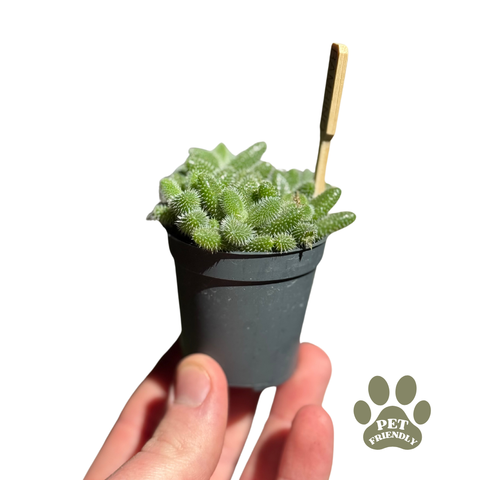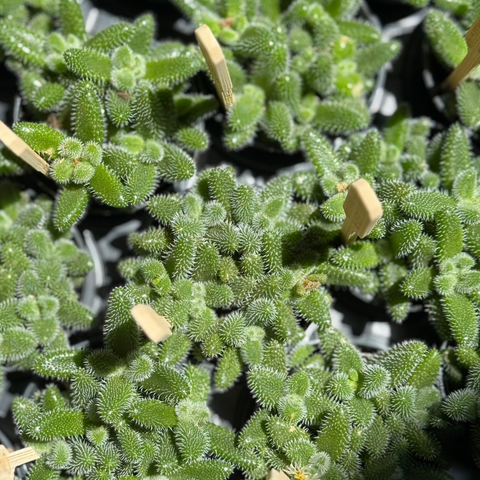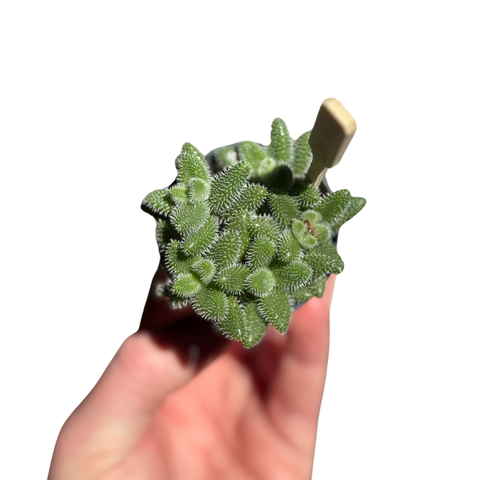


Delosperma Echinatum - Pickle Plant
Aroma Quartz📦 FREE SHIPPING OVER £40
Pot Size: 5.5cm
Delosperma echinatum
Common Names: Pickle Plant, Pickle Cactus
Full Botanical Name: Delosperma echinatum
Country and/or Region of Origin: Native to South Africa
Overview
Delosperma echinatum, charmingly known as the Pickle Plant, is a quirky and low-maintenance succulent with plump, spiky-looking green leaves that resemble tiny gherkins. Despite their prickly appearance, the leaves are soft to the touch, making this plant a fun and tactile addition to any indoor plant collection.
Growing Conditions in Native Habitat
Typically found growing in rocky, arid regions of South Africa, where it thrives in well-drained soil and basks in full sun.
Care Guide
Light: Thrives in bright light and can tolerate some direct sun. A sunny windowsill is perfect.
Ideal Room: Great for windowsills in kitchens, home offices, or conservatories where it gets plenty of sunlight.
Feeding: Feed once a month during spring and summer with a cactus or succulent fertilizer to encourage healthy growth.
Humidity: Prefers low humidity. Avoid placing in humid rooms like bathrooms.
Ideal Temperature: Enjoys warm environments between 60–80°F (16–27°C). Keep away from frost and cold drafts.
Watering: Water sparingly. Allow the soil to dry out completely between waterings. Overwatering is the quickest way to harm this plant, so when in doubt, skip a watering.
Pet/Child Safe: Non-toxic but not intended for consumption. Best kept out of reach to avoid damage to its delicate stems.
Soil Type: Needs a gritty, well-draining soil. A cactus/succulent mix works best to prevent root rot.
Propagation: Can be propagated easily from stem cuttings. Allow cuttings to callous over before planting in soil.
Eventual Height and Spread: Reaches around 12–18 inches (30–45 cm) in height and similar spread when mature.
Growth Rate: Moderate growth rate, with faster growth during warm months.
Pests and Treatment: Watch for mealybugs and aphids. Treat promptly with neem oil or an insecticidal soap.
Repotting: Repot every 2–3 years or when the plant outgrows its pot. Always use a pot with drainage holes.
Pruning: Minimal pruning needed. Remove any leggy or damaged stems to maintain shape and encourage new growth.
Air Purification: While not known for air purification, its compact size and minimal care needs make it an ideal plant for tight spaces.
Folklore: The Pickle Plant gets its name from its amusing resemblance to miniature pickles. With its playful look and easygoing nature, it’s become a favourite among succulent collectors and beginner plant parents alike.
